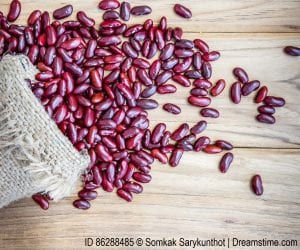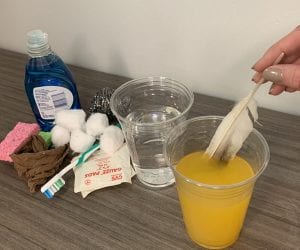Models are invaluable tools for explaining and investigating the world around us. And many groundbreaking advancements in math and science are the result of the brilliance and innovation of women who utilize these models in their work. Let’s take a look at some of the inspiring women whose contributions to society stretch from the depths of the ocean floor to the brinks of outer space.
Navigating The World and Exploring the Unknown
Gladys West: Pioneering Mathematician
You may not have heard the name of mathematician Gladys West, but you’ve likely used the technology that her work produced. While working as a computer programmer in the 1970s, West was the first to create an altimeter model of the shape of the Earth. Her innovative work with satellite geodyssey models, alongside Einstein’s theories of general and special relativity, were instrumental in the development of GPS technology.
West was one of only four Black employees and was only the second Black woman hired at the Virginia naval base where she worked. And over the course of a career that spanned four decades, West’s talent and perseverance carried her to do some incredible work in mathematical modeling. In order to create a model precise enough to serve as the basis for GPS, she used complex calculations and algorithms to adjust for tidal effects and other distortions to the Earth’s shape. After retiring in 1998, West went on to earn her PhD. But it wasn’t until 2017, after a lifetime’s worth of achievements in her field, that her contributions began to gain widespread recognition. You can follow Dr. West on Twitter here.
Zonia Baber: Geographer, Geologist & Activist
A geographer, geologist and activist, Zonia Baber made huge strides in the field of geography teaching and beyond. She spoke about the importance of holistic, interdisciplinary education at early ages, and placed high value on experimentation and field work as tools of experiential learning. In particular, Baber believed that map-making was a necessary component of education. She knew students needed to understand that maps are models which represent real places. And in fact, they should learn to create their own maps, knowing the processes well enough to be able to transform one type of map to another. Baber even patented her own geography desk. With built-in storage for clay, water and sand, the desk allowed students to create models of geographic features in the classroom.
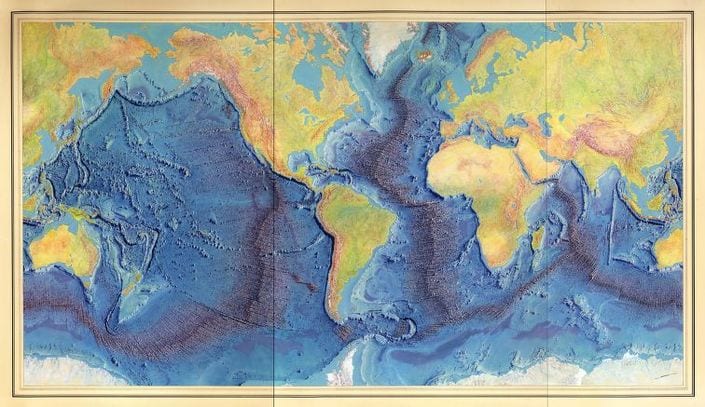
Manuscript painting of Heezen-Tharp “World ocean floor” map by Berann.
Marie Tharp: Cartographer & Geographer
In the face of significant doubt, Marie Tharp performed groundbreaking work in the areas of cartography and geography. In the late 1950s, a time when women weren’t permitted to work on ocean vessels, Tharp teamed up with Bruce Heezen to create the first complete map of the ocean floor. Heezen collected ocean sonar data, and Tharp, beginning with a blank canvas, mapped out detailed geological features of the ocean floor. She used light and texture, techniques of physiographic cartography, to differentiate elements such as canyons and ridges.
When Tharp identified what she believed to be a rift valley in the center of the ocean, some of her peers rushed to dismiss her. The existence of the rift valley supported the notion of continental drift, which was controversial at the time. Heezen initially referred to the idea as “girl talk,” and instructed Tharp to redo the work that led her to such conclusions. And explorer Jacques Cousteau set out on a mission to disprove the rift’s existence, venturing all the way to the middle of the Atlantic Ocean in order to do so. The result was a recorded film of the rift valley in question, which would ultimately help silence other doubters. Tharp’s trailblazing work proved to be instrumental in establishing plate tectonic theory.
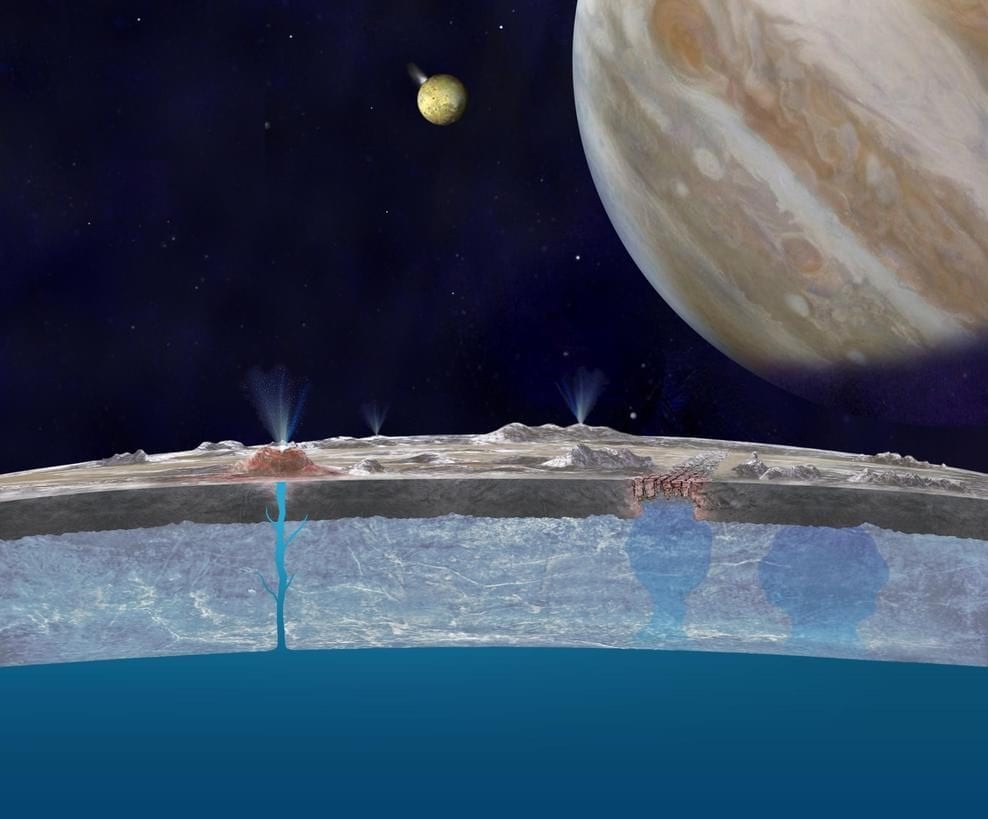
An illustration of geophysical processes on Jupiter’s moon, Europa.
Lynnae C. Quick: Planetary Geophysicist
Planetary scientist Lynnae Quick uses modeling to uncover mysteries both inside our solar system and beyond its bounds. Inspired by the prospect of exploring “alien worlds,” Quick described first learning to identify and map features on the surface of Jupiter’s moon, Europa, as one of the most memorable moments in her early career. In her research, she uses mathematical modeling to simulate conditions on Europa and similar bodies, analyzing internal ocean crystallization, ice crust formation, volcanic processes, impact cratering, and more. Quick recently led a study that used estimates of internal heating rates to model geologic activity on 53 terrestrial planets outside the solar system. This 2020 study concluded that a quarter of the exoplanets could be ocean worlds. Quick and other scientists will continue to employ mathematical modeling to investigate whether or not the conditions on these types of planets are capable of sustaining extraterrestrial life.
Fan Chung: Mathematician & Graph Theorist
Modeling also comes in handy when delving into the depths of the virtual world. Fan Chung is a mathematician known for her innovative work in graph theory, which deals with mathematical models of networks. She has successfully solved various long-standing problems within her field, improving understanding of very large systems with complex functions. These advancements in graph theory are
significant to the rapidly evolving field of network science and provide insight into the continued development of massive systems like the internet. As she uses modeling to investigate the functions of large, real-world networks, Chung sets the stage for young mathematicians who might seek to follow in her footsteps. She has been consistent in encouraging women to be fearless when exploring careers in math, saying “in mathematics whatever you learn is yours and you build it up — one step at a time.”
Improving Wellbeing and Moving Towards Sustainability
Dawn Jeannine Wright: Geographer & Oceanographer
Modeling has been key in Dawn Jeannine Wright’s impactful career in oceanography. She helped create the first geographic information system (GIS) data model for the oceans, and she continues to lead the way in utilizing these systems for mapping the seafloor. Wright’s extensive deep sea mapping efforts are instrumental in supporting marine conservation and sustainability. Through GIS mapping work, she helped expand the bounds of the National Marine Sanctuary of American Samoa and provided local communities with resources to support coral monitoring and protection. Currently, Wright is a Chief Scientist at Esri, where she is heading up the creation of a 3D ocean map. This undertaking is intended to advance ocean sustainability, providing information that can aid in creating resilient marine environments. You can follow Dr. Wright on Twitter here.
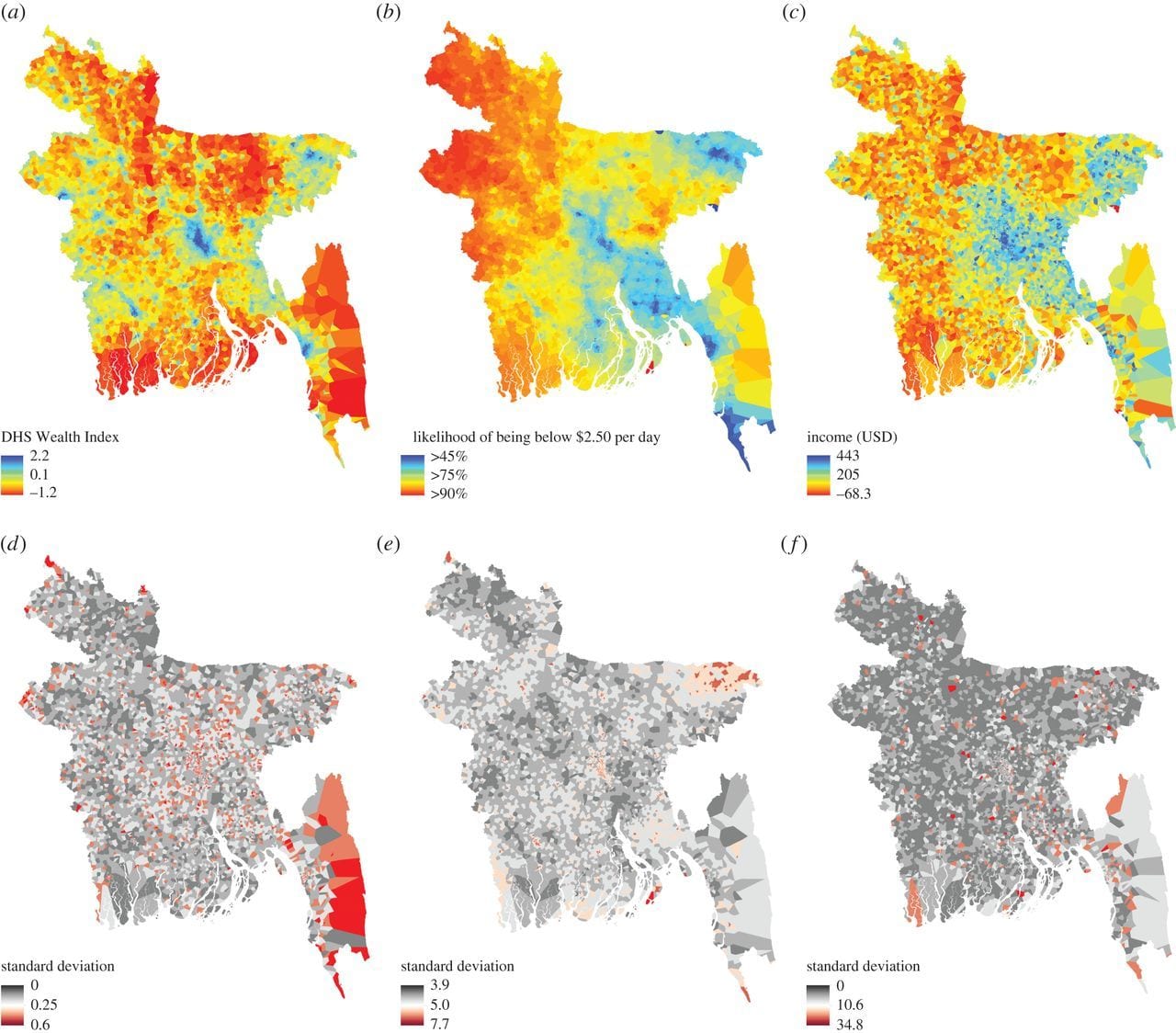
Prediction maps of socioeconomic indicators generated using call records, remote sensing data and geostatistical models.
Carla Gomes: Computer Scientist
Computer scientist Carla Gomes is credited with coining the term computational sustainability, and she has proven to be a pioneer in this interdisciplinary and innovative field. Her research focuses on developing solutions to computational problems that address economic, environmental, and societal issues and on laying the foundation for a sustainable future.
Computational sustainability relies on the ways in which advancements in artificial intelligence and sustainability science enhance and enrich one another. Computer science and applied mathematics provide unique tools for tackling vast and complex issues. For instance, satellite and remote sensing data can inform maps of socioeconomic indicators for regions where there is no census information. In this way, scientists can use mathematical modeling to address the societal goal of mitigating poverty. Similar patterns of thinking provide a path forward when it comes to issues of wildlife and biodiversity conservation. The work of leaders like Gomes is essential for continued progress in these areas.
Caitlin Rivers: Epidemiologist
Amidst the chaos of a global pandemic, women have continued to provide invaluable contributions towards building a stronger, more resilient society. COVID-19 exposed weaknesses in health systems while also exasperating issues of gender inequality in health sciences, but in the face of such challenges, epidemiologists like Caitlin Rivers continue to persevere. Early in her career, Rivers used models to predict the spread of diseases like Ebola and Middle East Respiratory Syndrome, and her current research is centered around the use of infectious disease modeling to inform public health preparedness. Now, Rivers wants to implement a modeling system that will prevent disease outbreaks from reaching the disastrous levels that the world has seen recently.
In particular, she is pushing for the creation of a national infectious disease forecasting center. In a style similar to the National Weather Service, this centralized data source would allow for information on specific diseases to be used in mathematical models to forecast outbreaks. These forecasts would then influence decision-making towards the prevention of future epidemics and pandemics. Rivers is one of many scientists working to apply our understanding of modeling and disease behavior in a way that will improve public health and wellbeing. You can follow Dr. Rivers here on Twitter.
We hope you enjoyed reading about these exceptional women who have contributed so much to math and science modeling. These female role models show us all that when women are at the table and have space for invention and innovation, we all benefit from the outcome.
Image credits: Ocean map ([Manuscript painting of Heezen-Tharp “World ocean floor” map by Berann]. Library of Congress, Geography and Map Division.); Europa (Taste of the Ocean on Europa Surface Artist Concept; NASA/JPL-Caltech); Prediction maps (J.E. Steele, P. R. Sundsøy, C. Pezzulo, V.A. Alegana, T.J. Bird, J. Blumenstock, J. Bjelland, K. Engø-Monsen, Y. de Montjoye, A.M. Iqbal, K.N. Hadiuzzaman, X. Lu, E. Wetter, A.J. Tatem and L. Bengtsson, 2017, CC BY 4.0)



